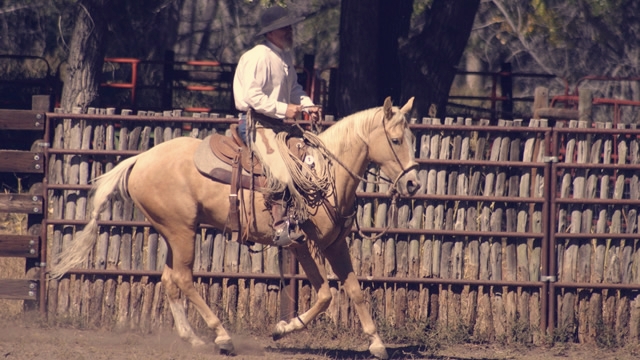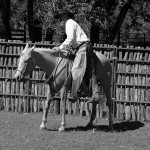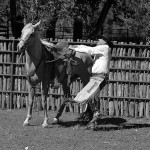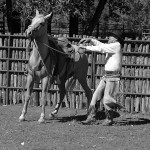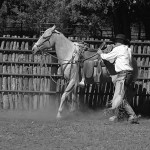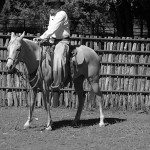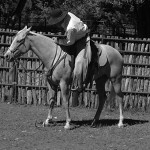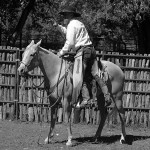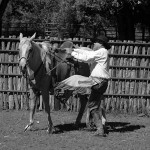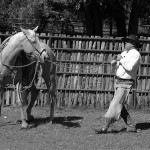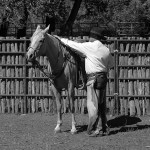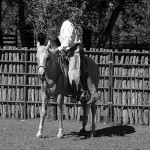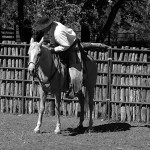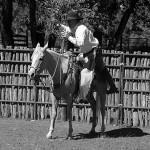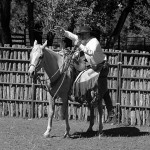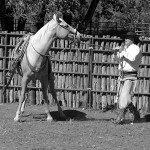If you use your get down rope properly, it will help you avoid getting in a wreck or injuring your horse’s mouth while mounting and dismounting.
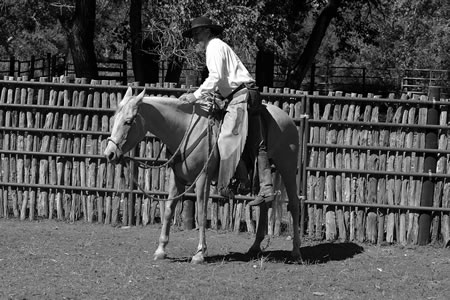
Photo 1
1. Often I see people getting off an on their horses with their hands on their reins, not their get down rope.
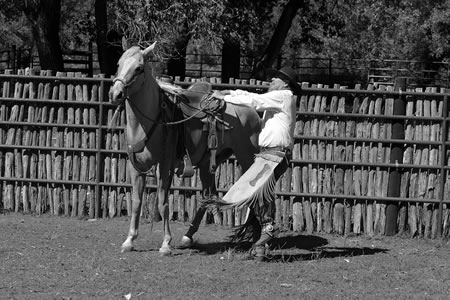
Photo 2
2. If I'm halfway on, and my horse spooks, I might have to step down, or I might fall backward.
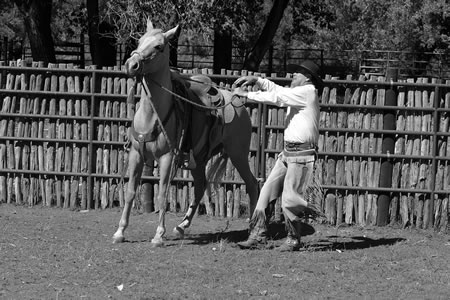
Photo 3
3. Since my hands are on my reins, I will be pulling on my horse's mouth as I fall back, pulling him toward me.

Photo 4
4. Now, my already frightened horse, is pulled on top of me. He might kick or step on me.
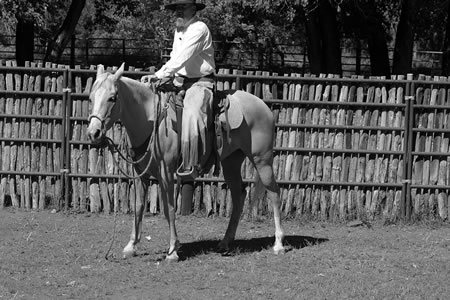
Photo 5
1. When I get ready to step off, I push my reins up my horse’s neck. I have my get down rope in my belt.
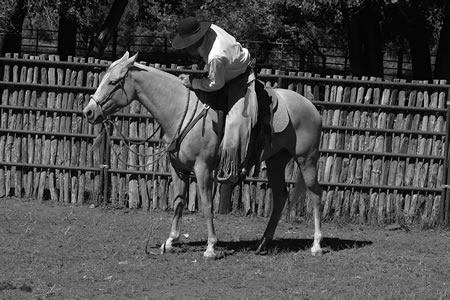
Photo 6
2. I get ready to swing off, My hand is on my horse’s neck—on my get down rope, not my reins.
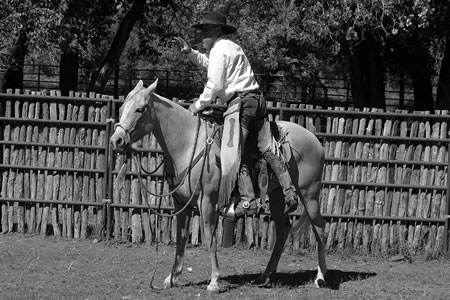
Photo 7
3. Now when I’m in this vulnerable position, if my horse were to spook, I am more prepared.
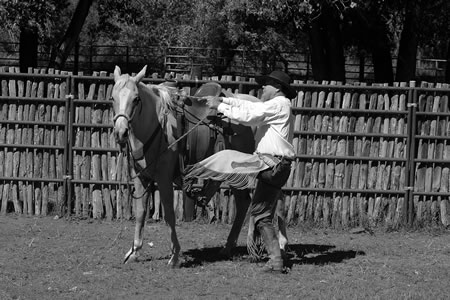
Photo 8
4. As I fall back and step off, I have a hold of my get down rope.
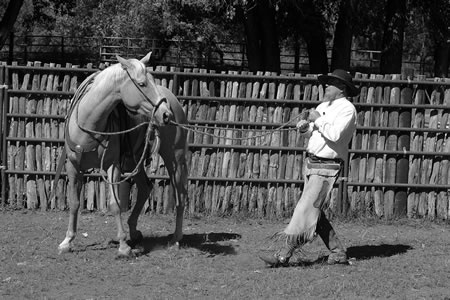
Photo 9
5. My momentum pulls his nose toward me, and his hindquarters away.
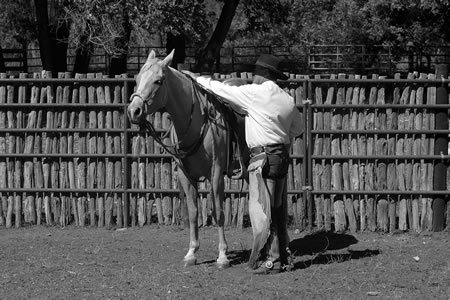
Photo 10
1.As I step on, I have my reins way up my horse's neck and my hand on the get down rope.
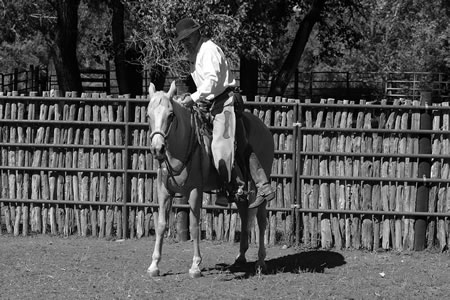
Photo 11
2. I step up and get ready to swing my leg over and sit in the saddle.

Photo 12
3. Right here is where I'm most vulnerable, and where a very young horse might get bothered by my leg.
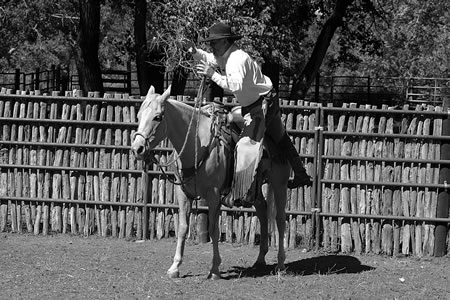
Photo 13
4. So if he were to spook, I could step back off of him with my get down rope in hand.
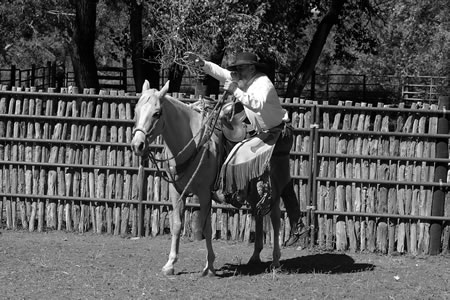
Photo 14
5. My momentum again will carry me backward, but since I have ahold of my get down rope...
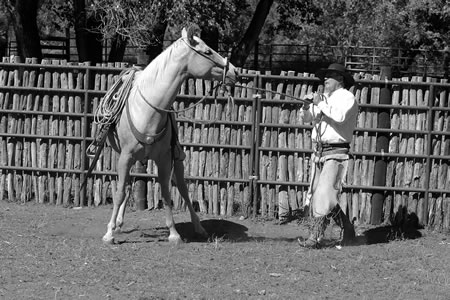
Photo 15
6. I pull his nose toward me, and his hindquarters move away from me, keeping me safe.

